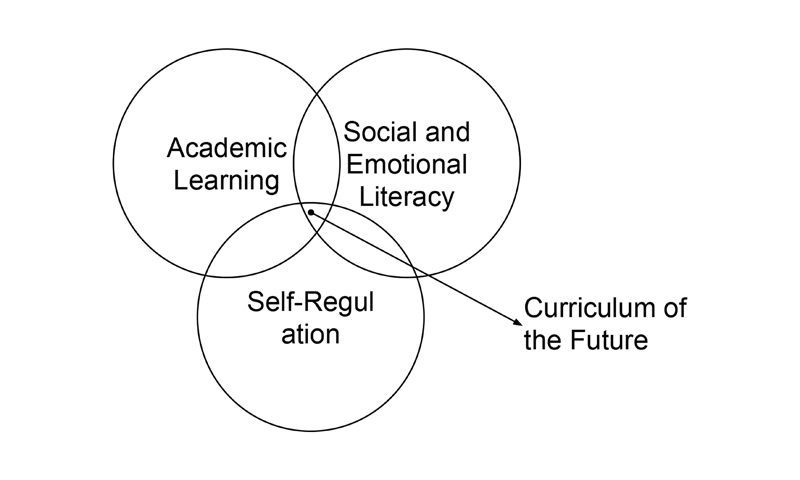With 24 years of experience in education and media, Raquel was born in Bangu, one of the poorest and most violent areas of Rio de Janeiro. She has held multiple responsibilities in various social communication and educational organisations. She was also associated with the PUC-RIO, UERJ, Instituto Singularidades and Fundação Getúlio Vargas as a Professor and Researcher. She worked as an English teacher for 20 years both in the public and private sector in Brazil. In 2012, she got the IATEFL Learning Technologies SIG Scholarship. She was a Pearson Fellow, within the Masters of Public Policy (MPP) program at The Pearson Institute for the Study and Resolution of Global Conflicts, working with early childhood in daycare centres in South Africa. Raquel assumed the VP of Education and Public Policies of the British Startup Gigalime amid the COVID-19 crisis to rethink possible futures and spaces for digital transformation so that educational systems are redesigned to be in tune with the growing needs of contemporary societies, with covid19, and future, as a result of what we are now experiencing. The question is how to renew education systems and models around lifelong learning, which will be an increasingly necessary and inevitable requirement in the future of work and education.
Artificial intelligence (AI) continues to grow in its applications and influence over our lives and education is right in the path of this seemingly unstoppable juggernaut. But if a misdirected advert on social media is at worst a little annoying to the recipient and wasted spend for the advertiser, when we apply it to a child’s education and make decisions that will impact the entire adult life of the student then we need to take much more care. I will use the concept of systemic change, from Michael Fullan, to guide my ideas on this article you are reading now. So, if you do not know him, let me share some of his thoughts on leading in a culture of change with you. ‘Leading in a culture of change means creating a culture (not just a structure) of change. It does not mean adopting innovations, one after another; it does mean producing the capacity to seek, critically assess, and selectively incorporate new ideas and practices – all the time, inside the organization as well as outside it.’ We need to have a proper process for validating AI tools and maintaining the quality and effectiveness of the outputs in this culture of change. Quality management (QM) is a broad discipline but at its heart is improving processes aimed at achieving an organization’s goals. To be effective we must know and understand the goals and understand how we are going to measure how close we are to achieving them. Here I explore the nature of QM and how it can be applied to the validation and use of AI tools in education.
Quality Management and Industry 4.0
QM is a mature discipline, having its roots in 1950s manufacturing and beyond. But even today one will find many different definitions of QM including zero defects to fitness for purpose. Two simple and relatively easy to understand terms but hardly relevant to teaching and maximising the potential of all students equitably and inclusively. Instead, I propose that we define quality in terms of meeting the goals set by stakeholders in education which includes the state, society, teachers and students. We can break QM into three distinct components and use those to monitor and improve the outcomes in education. Quality control, seen as measuring the result at the end of the process and then trying to address any shortcomings. In education, this is essentially the exam system at key stages in the students’ development. This is rather like the so-called industry 2.0 of a rigid and controlled process. And it reflects most of our so-called summative assessment tools poorly aligned with the goals and expected outcomes of the instruction. The important thing here is the product. Quality assurance is the process and tools used to maximise the probability that the outputs of quality control are met. This includes teacher training and development, good tools and equipment in the classrooms, good social welfare for students and classroom sizes.
I would compare it to the use of tools that identify misconceptions, struggles, and learning gaps along the way and assess how to close those gaps for all the school community. As (Trumbull and Lash, 2013) say, it includes effective tools for helping to shape learning, and can even bolster students’ abilities to take ownership of their learning when they understand that the goal is to improve learning, not apply final marks Total quality management is an overarching concept of continuous improvement and instilling an organisation-wide culture of quality. This is in line with the concepts of industry 4.0 and the full use of automation and data to improve outcomes and enable unique ‘customer’ experiences. It is where the need for AI comes to the fore to manage the scale and complexity of education and to allow personalisation of student learning.
Managing Diverse Goals
QM is all well and good but cannot operate in a vacuum. We need to understand the goals of education. Education is. of course, no longer one size fits all production line. We recognise the need to personalise education as much as possible to the individual, but within the capacity of those providing education and within the goals of a broader society. This leads to the challenge of defining goals within this complexity that can be used to establish and guide quality management systems in AI and data-driven education. Goals will come from the state, these will be driven by a top-down need to create a skilled workforce for the economy in the most cost-efficient way; from the broader society, and covering areas such as equity and inclusion; from schools, concerning teacher welfare and development; and from students individual preferences and ambitions. And I make use of ambition for Education as it is explained in the Sustainable Development Goal 4 (SDG 4) of Agenda 2030 which aims to “ensure inclusive and equitable quality education and promote lifelong learning opportunities for all” by 2030. This is a complex set of potentially conflicting goals and will require an ongoing agile debate.
The Need for AI in Education
The need to manage the complexity of goals at scale flexibly and measurably points to the value of AI tools that can deal with such a diverse system. At scale, it could help governments to understand how learners across a country are keeping up with the curricula. Such technology may be a particularly powerful approach for remedial or supplementary learning, to help the weakest and most disadvantaged learners keep up with the curriculum. But such an approach still requires the intervention of a teacher, to ensure that students are actually learning instead of just passing badly designed routine tests. Policymakers will need to ensure that such technology serves the learner as a whole, based on a comprehensive curriculum. And learning must give students conditions to be citizens in an equitable future that we are still trying to preview with “old glasses”. Martin Ford has seen this future in his book The rise of the robots, and it doesn’t work if we keep on with the same model of school we have today. “One of the obvious implications of a potential intelligence explosion is that there would be an overwhelming first-mover advantage. In other words, whoever gets there first will be effectively uncatchable.” But there is good news: technology can power the next surge in creativity and collaboration. The question is: how can we make this disruption happen? Which kind of control do you have over it?

AI and Teachers
When it comes to using AI in the classroom there are several models of interaction between AI and teachers. In the first case, AI could be used to replace some or all functions of a teacher. If it replaces administrative work and frees teacher time to spend with students this may be beneficial, but threatening teachers job security will be detrimental to wellbeing and harmony in the school. The value of AI is often greatest when it is used to enhance rather than replace human experts. This can be by increasing capacity or throughput or by improving the quality of the outputs. This is an exciting prospect if AI can enable true personalisation while maintaining core adherence to the curricula. This would also support moving towards a new model of the curriculum based upon principles of industry 4.0.
Supporting Future Curricula
AI will allow the evolution of teachers from knowledge banks to mentors and moderators of individual learning. A combination of academic learning, social and emotional awareness, and self-regulation of learning will put citizenship at the heart of learning and be the basis of the future curriculum where these characteristics overlap. Our challenge is viewing the curricula as a collaborative construction which has to be flexible to the societal changes. And to the idea that we have possible futures. Yes, in the plural. And so are our learning curves. Many teachers, teachers-in-training, and even psychology and education undergraduates miss the foundation that they need to understand and reflect upon not the ‘how’s’, but rather the ‘why’s’ of what good teaching is according to Kirschener & Hendrick (2020). Learning is a result of processing that which you experience. The goal of good learning and instruction is to optimise this information processing by creating learning opportunities visible to the learner. And this holistic view of the learning process is needed. This diagram was created by David Peck and Ivan Siqueira as part of the article Brazil Education after Covid-19 translated by me during the COVID Pandemic and to be published by Getulio Vargas Foundation.
A Protocol for Testing AI Tools
AI tools are in some ways like new drugs to treat diseases, they come with claims of efficacy and safety. These claims need to be demonstrated with volunteers and pilot studies in a controlled environment. A badly tested drug can lead to patient suffering and even death. Bad AI tools can lead to teachers and students suffering and for students’ lifelong prospects to be adversely affected. A protocol for testing AI claims in education needs to be developed so that the tools can be evaluated safely in controlled studies with a small set of schools and can be scaled up and rolled out reliably. It is important not to allow the development and adoption of AI in education to be a new wild west frontier without regulation.
What’s Next?
We are moving from an ethos in which teachers tell students what to do to one in which teachers and students work collaboratively to try to navigate in a world of uncertainty. We need to calibrate our compass, our curricula, and AI can make the difference. But none of the above will happen if we do not change our mindsets. How to have agency collaboratively? How to be a bridge between the most experienced and less experienced learners? If we can discuss these questions, avoiding the trap of polarisation, chances are we will learn how to learn benefiting from artificial intelligence without subjugating our natural intelligence




